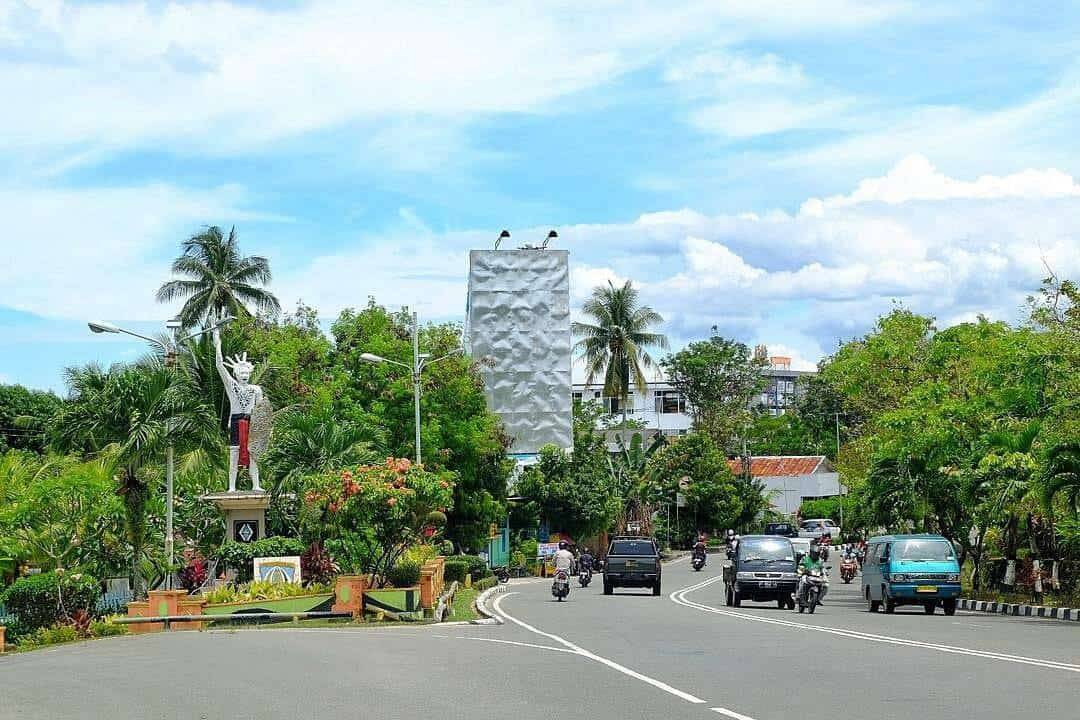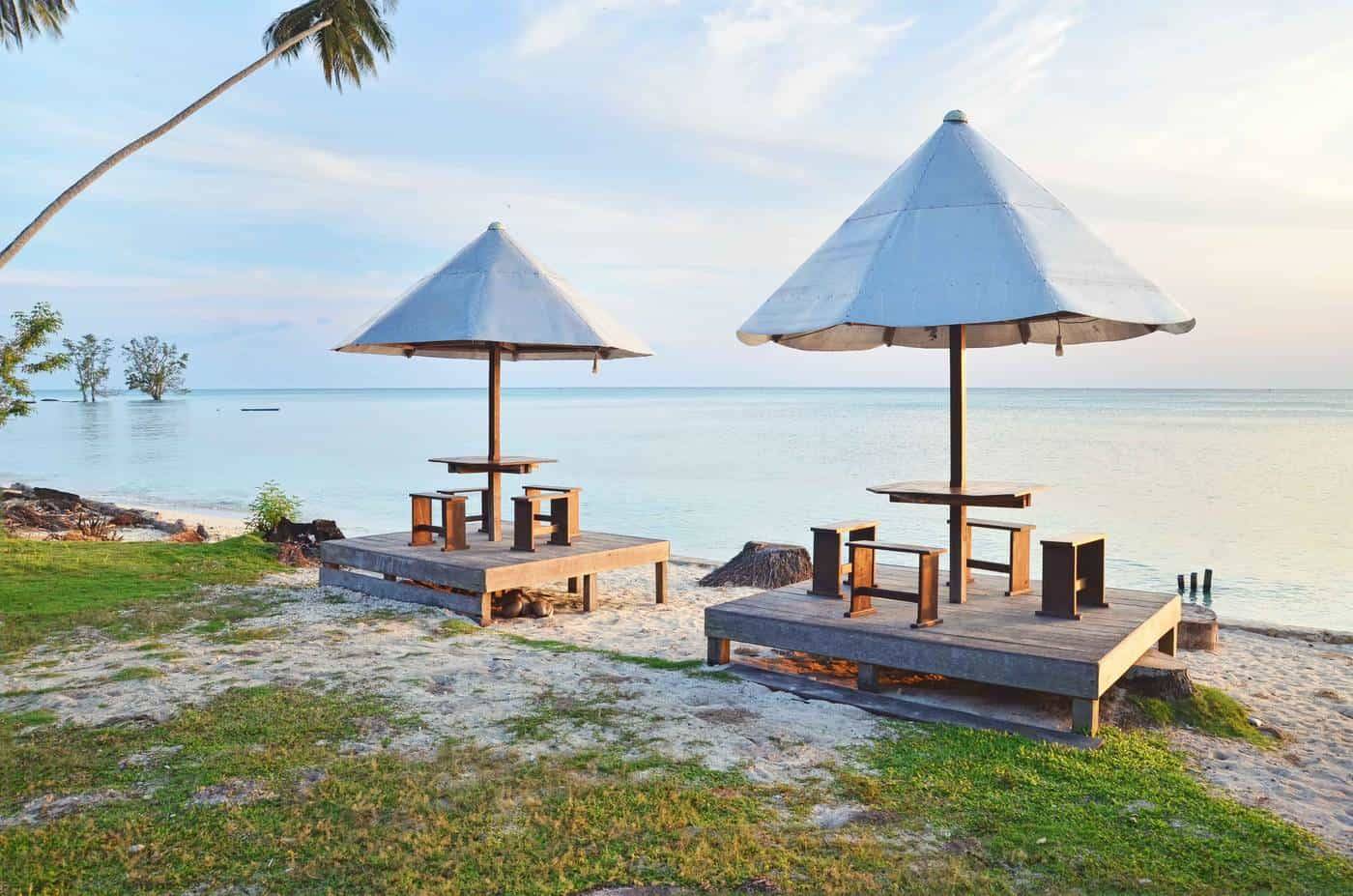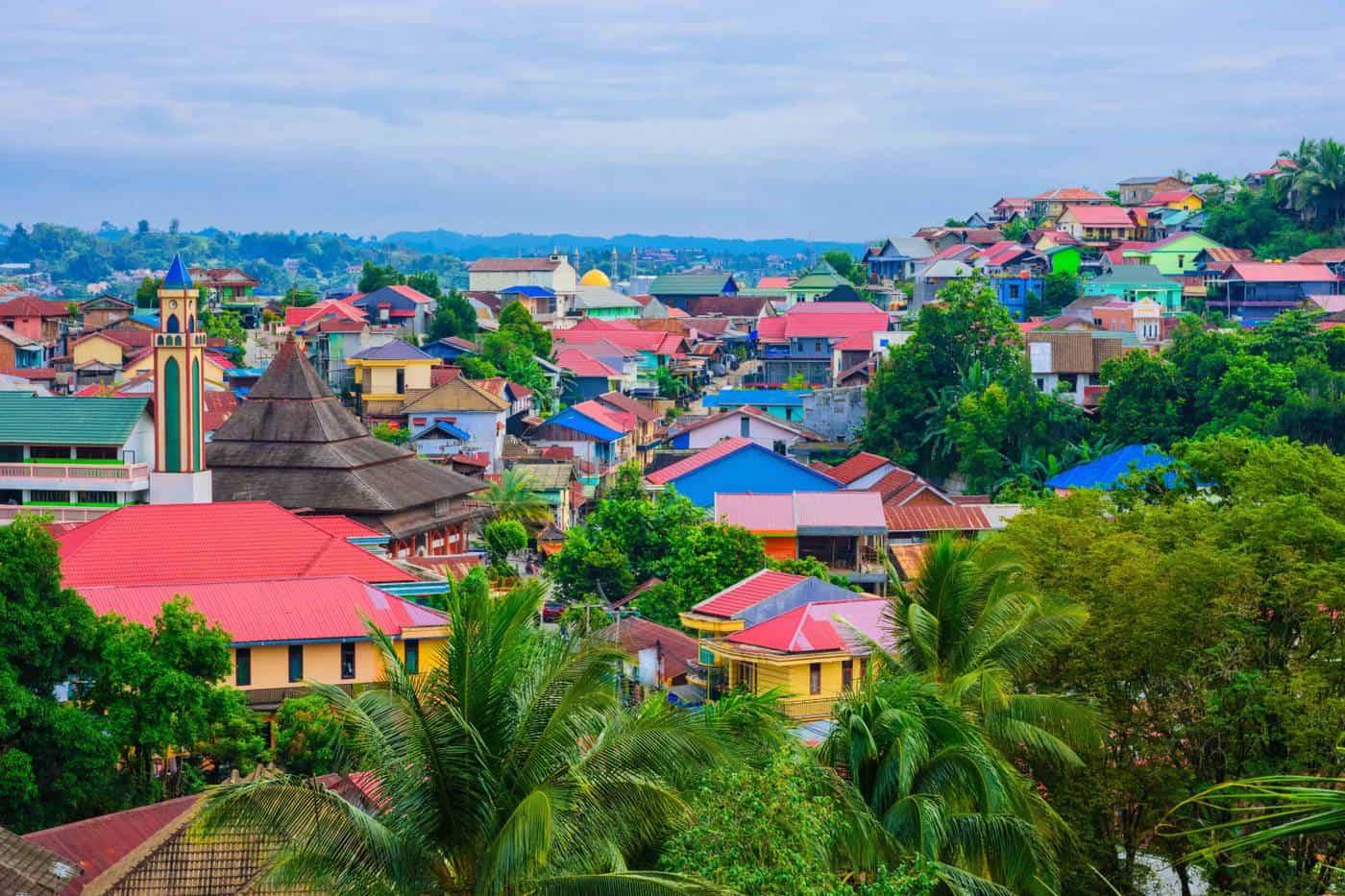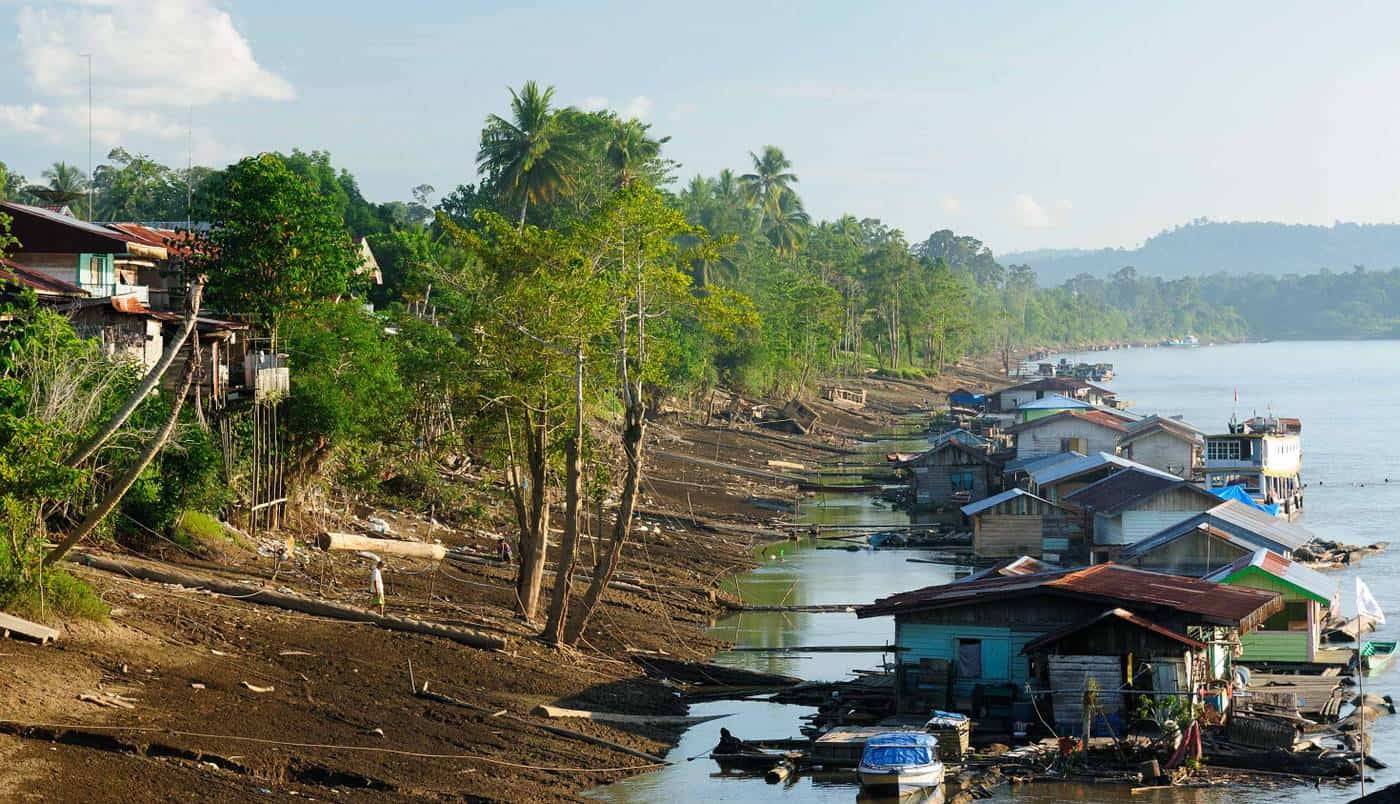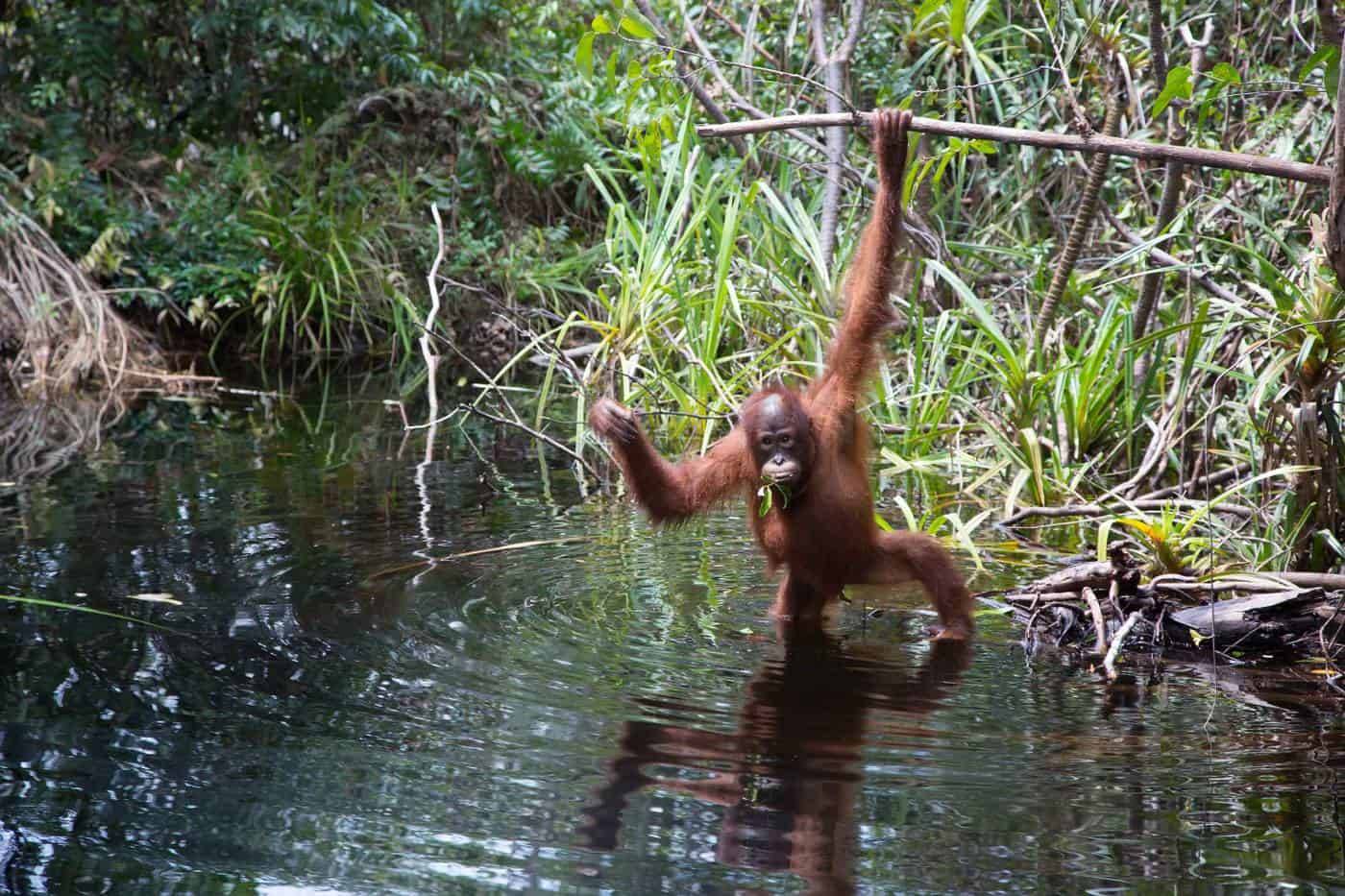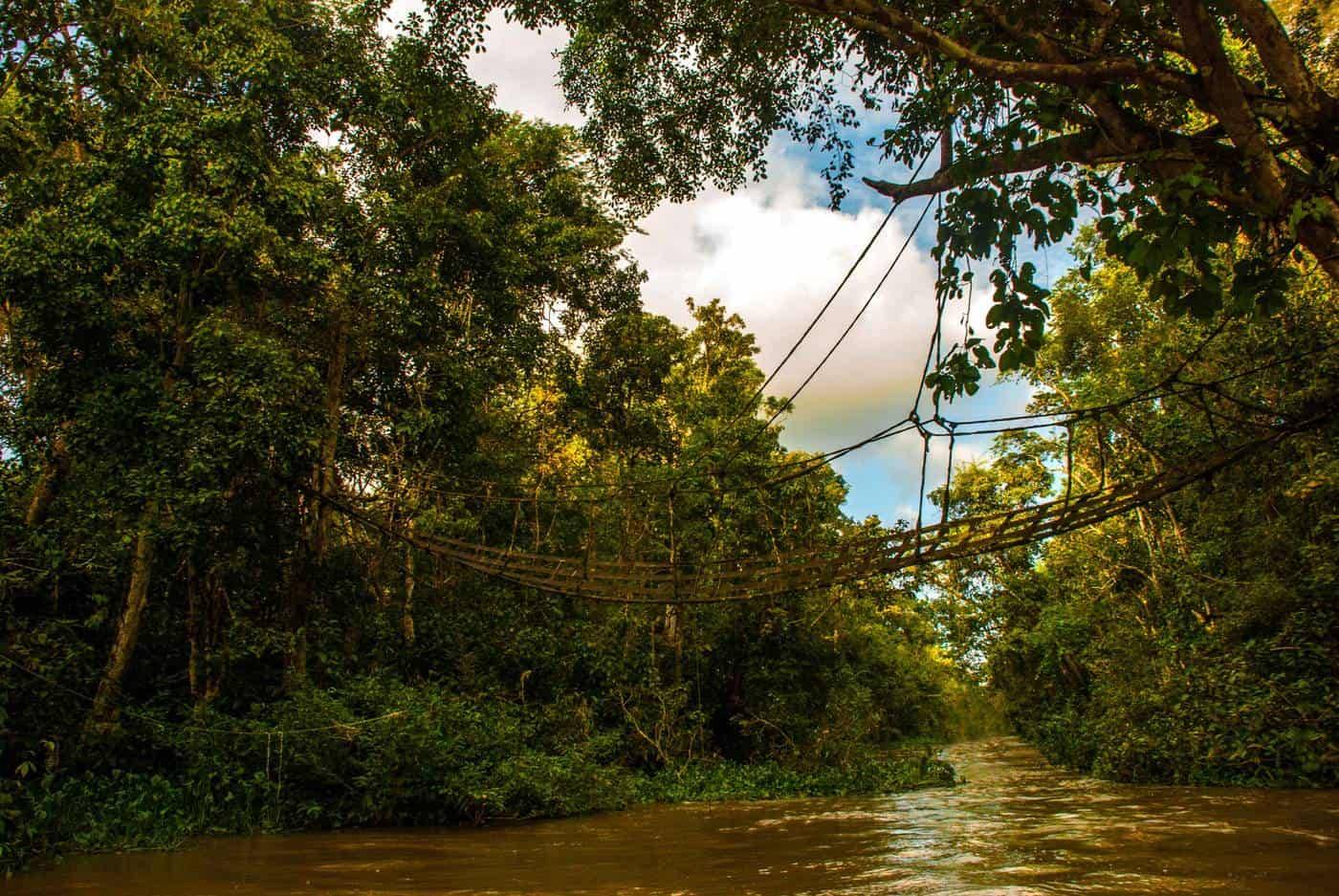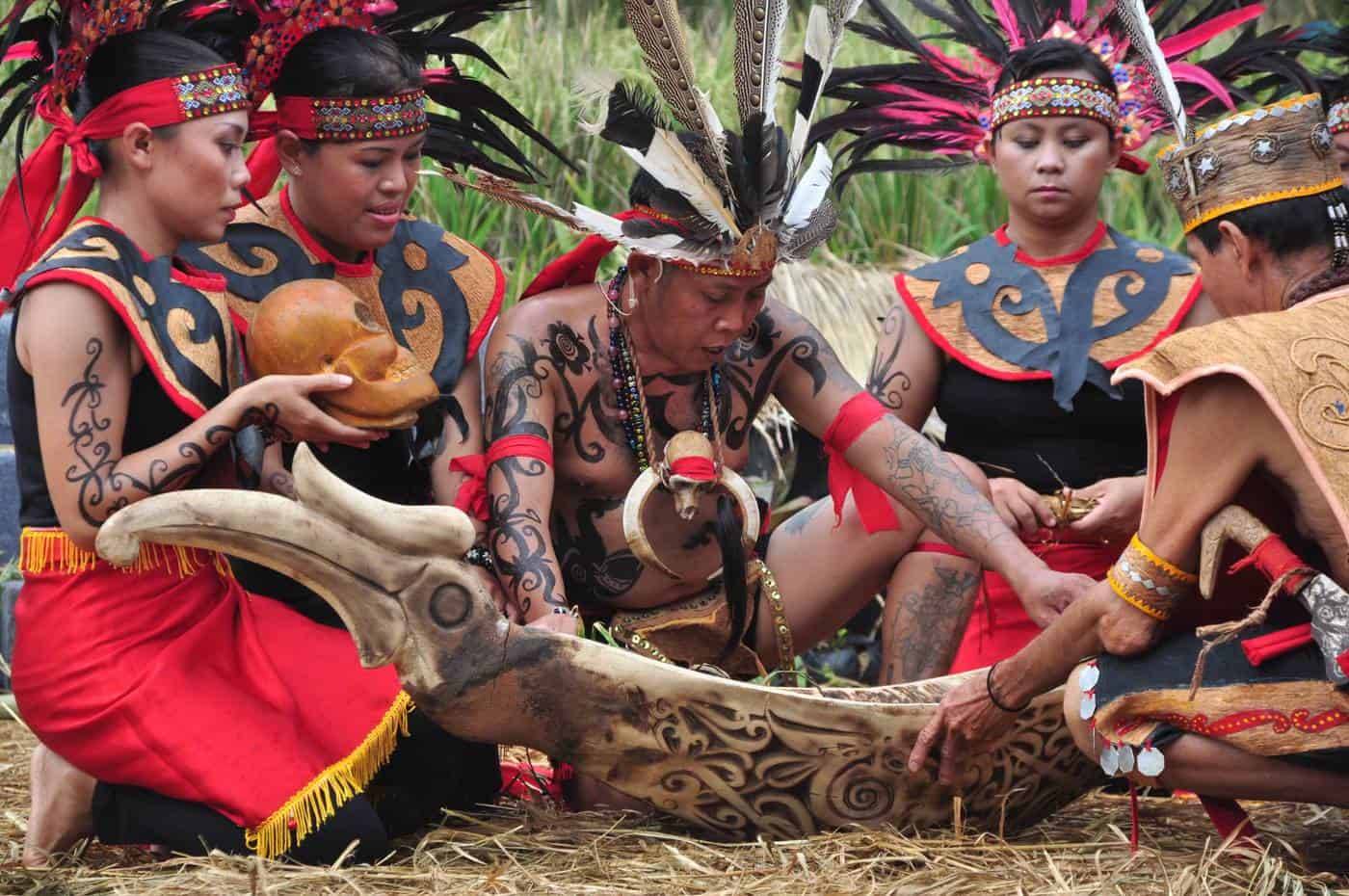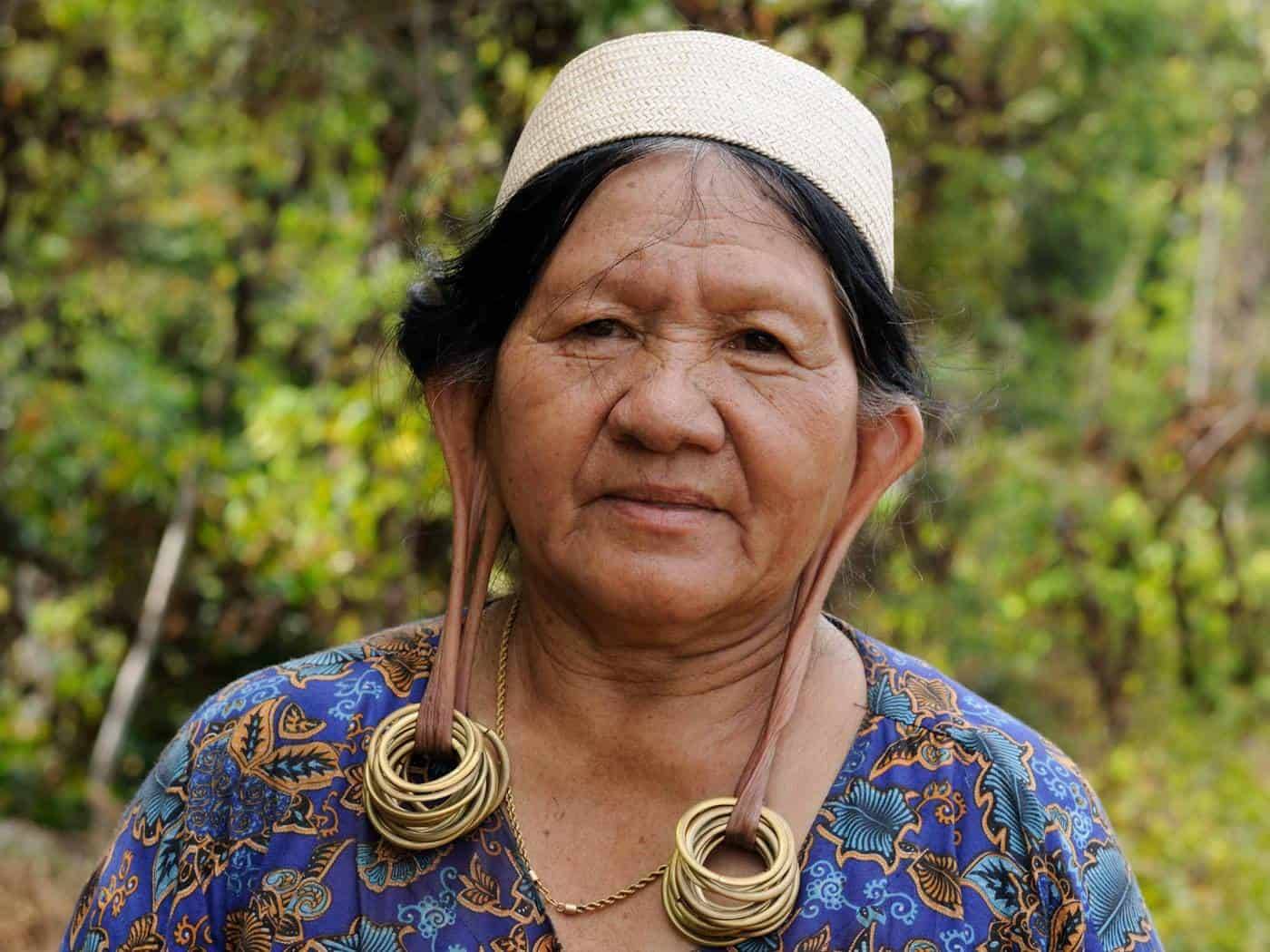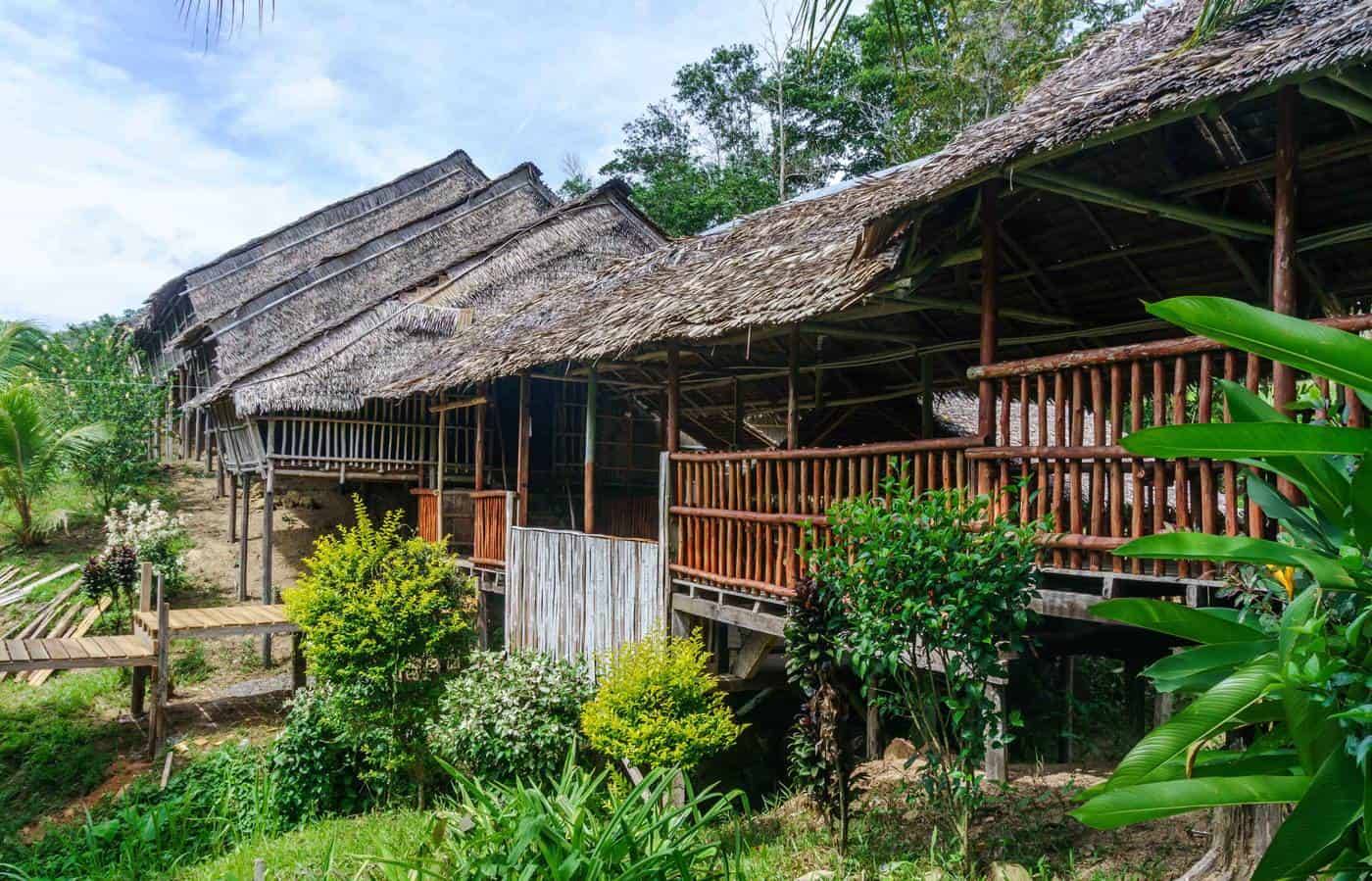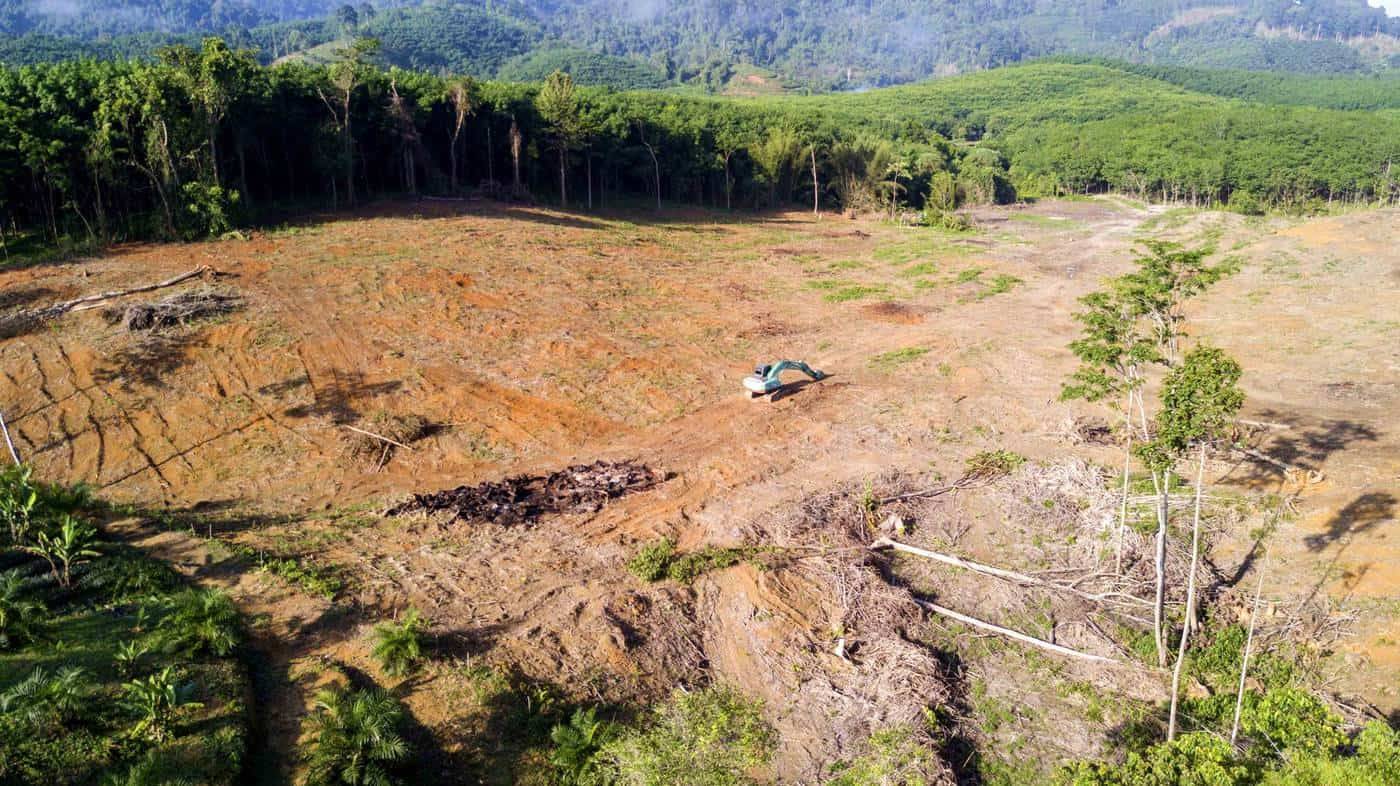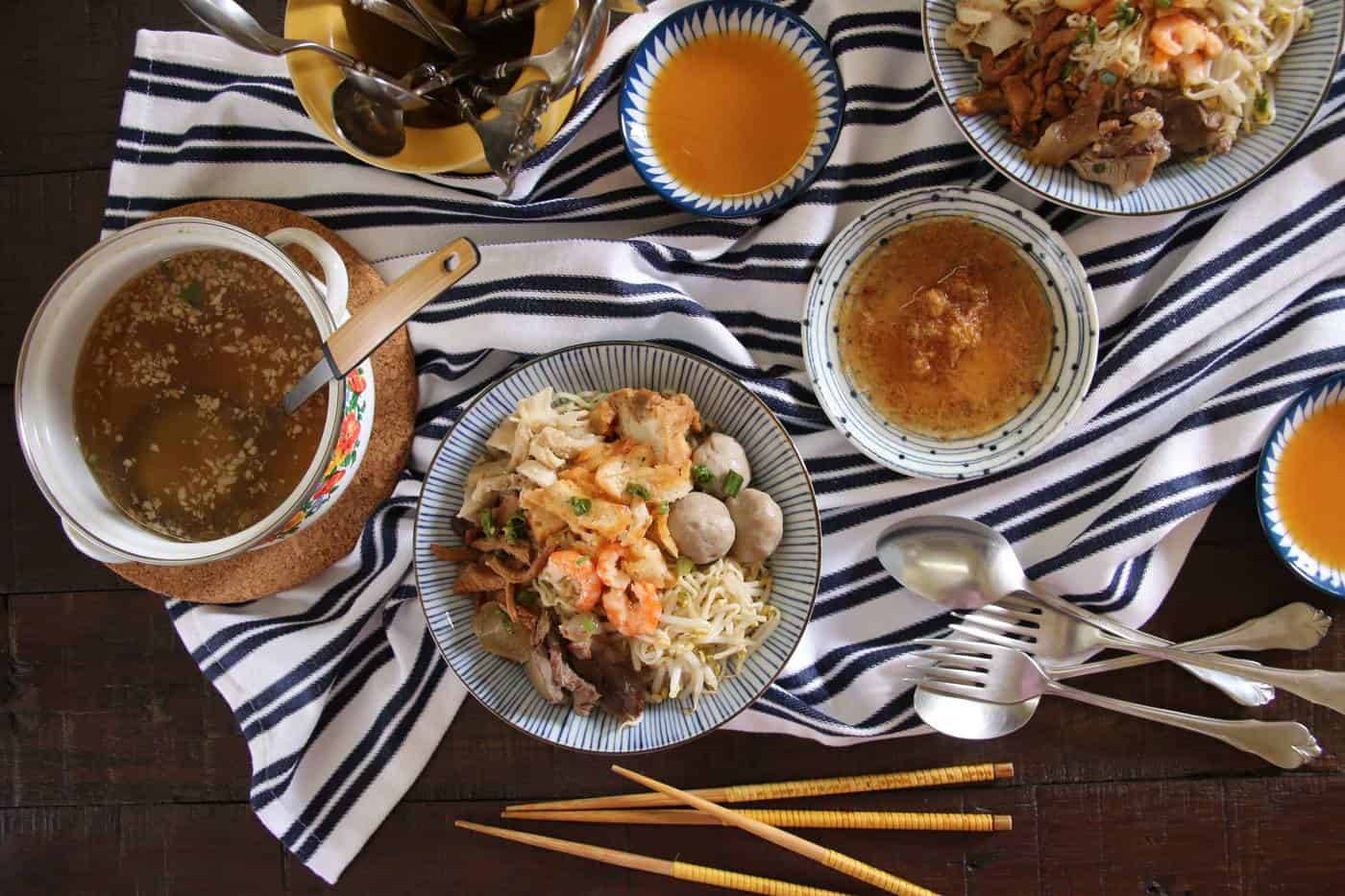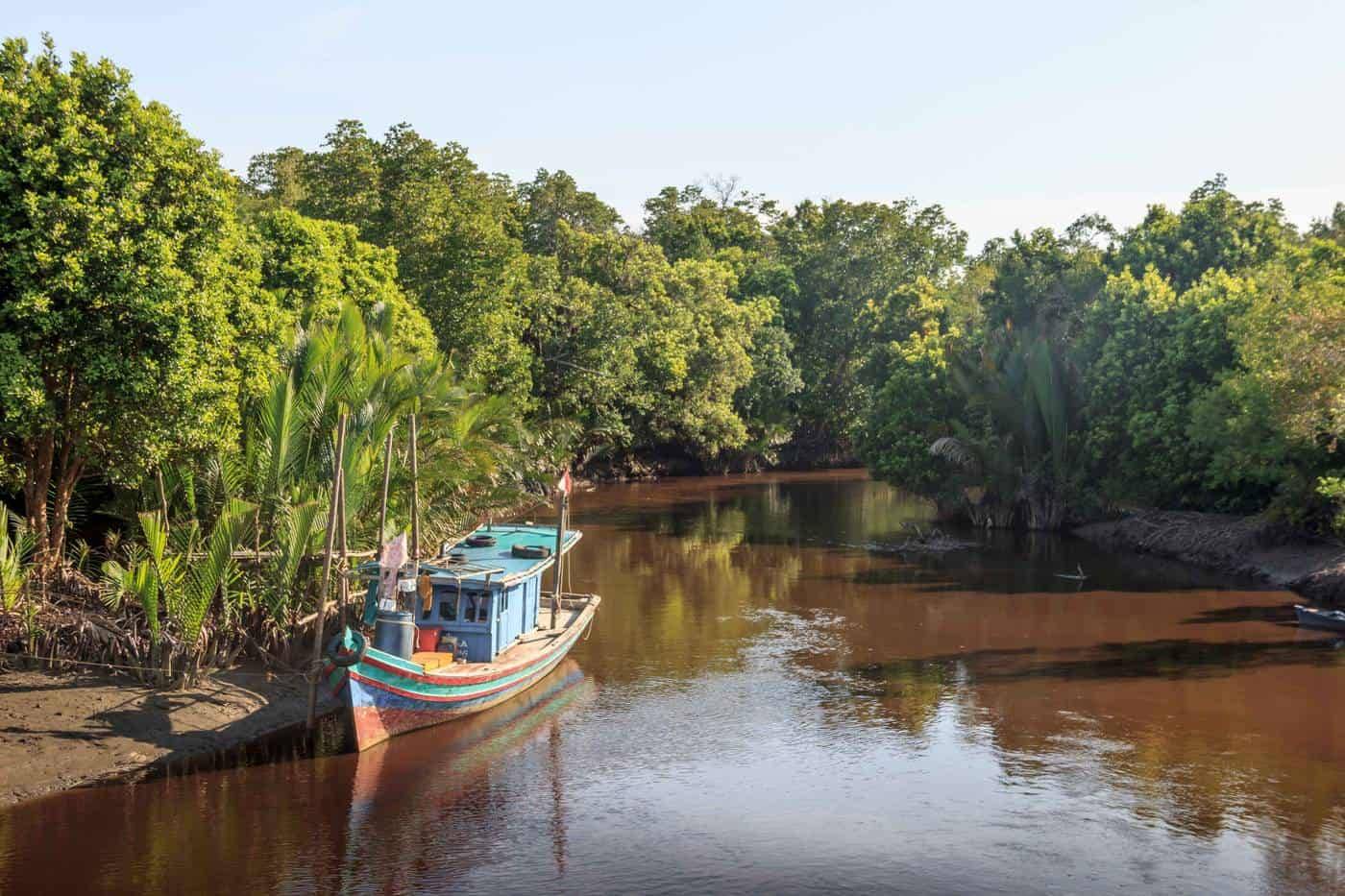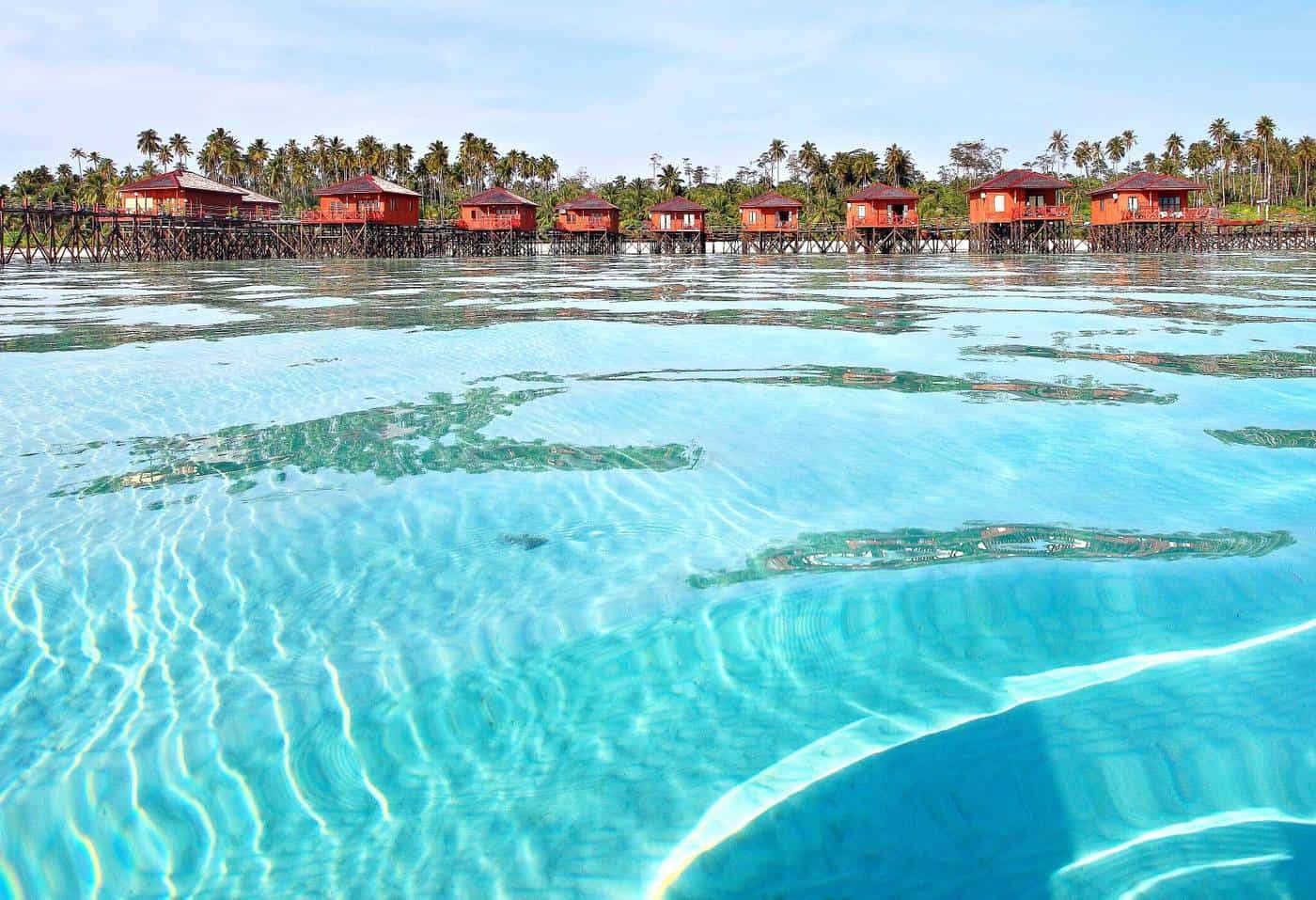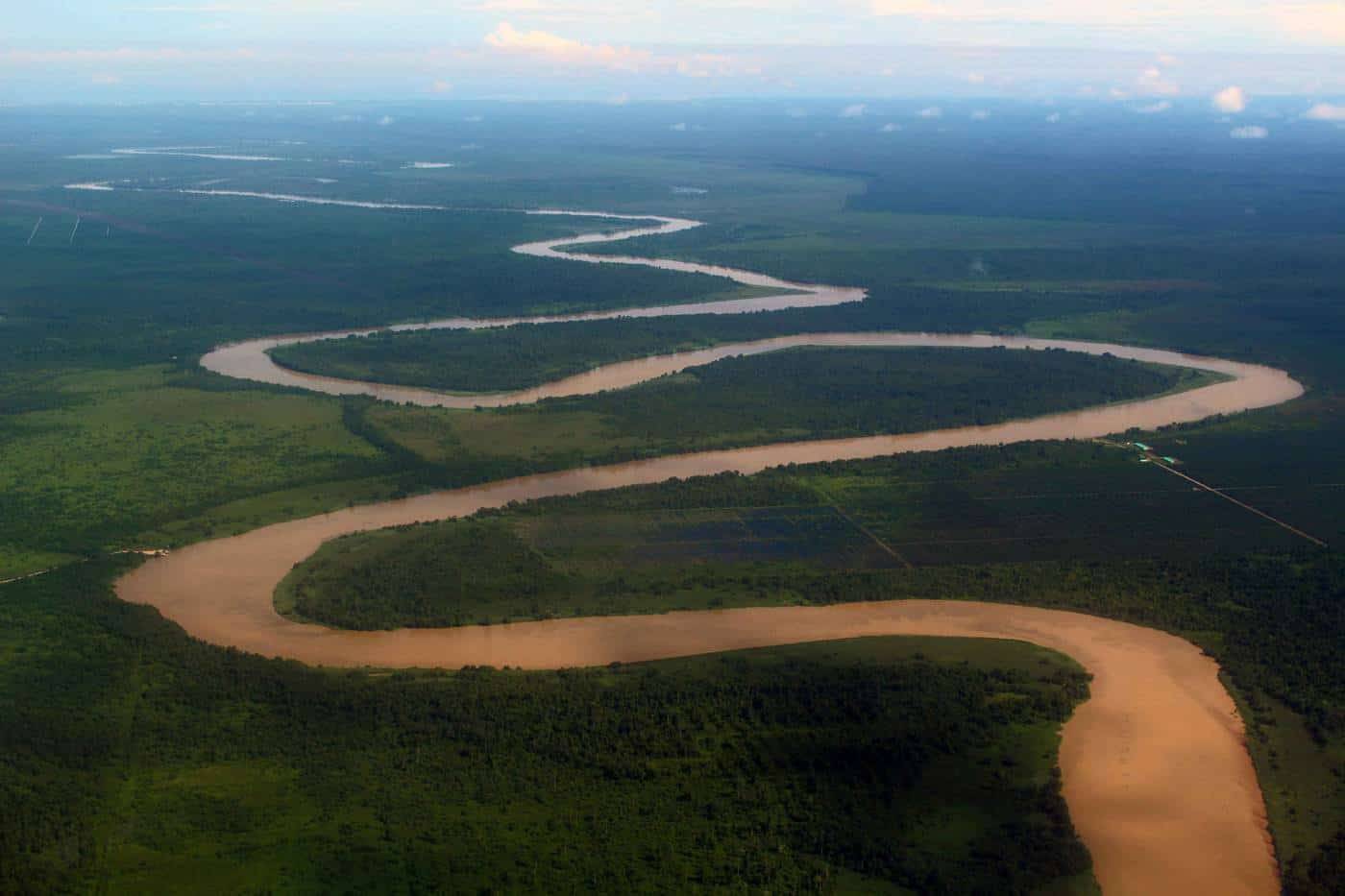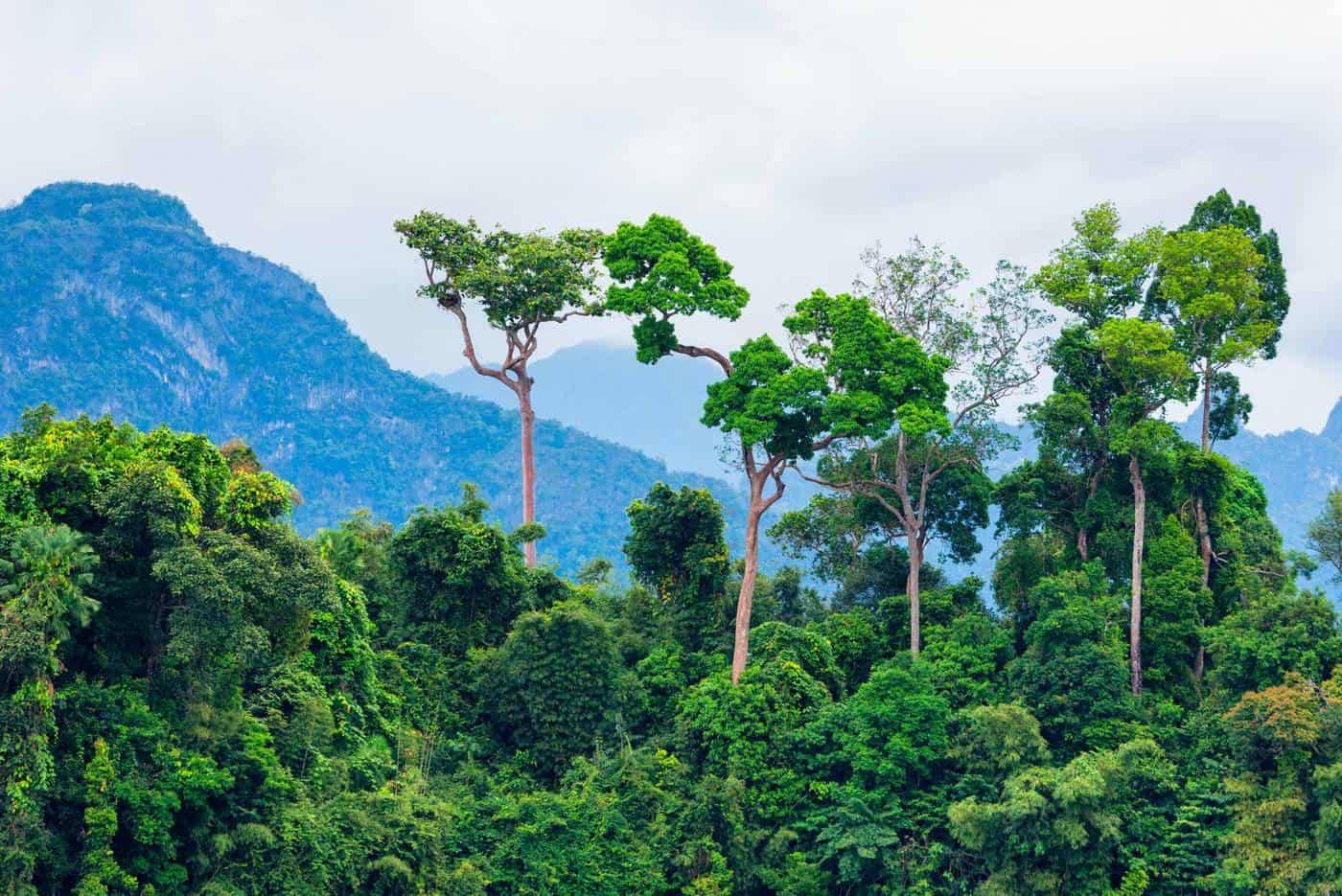
EAST KALIMANTAN (PEOPLE OF THE RAINFOREST)
BALIKPAPAN
The second largest city of East Kalimantan is a modern seaport town and it can hardly be skipped by any traveller – most of them will land here anyway as it has the second most frequently used airport in Indonesia; only Jakarta can beat it. It is easy to move around in Balikpapan since – rarely in Kalimantan – the city has very good roads and transport.
Rated as the ‘Most Liveable and Most Loveable City in Indonesia’, Balikpapan features a pleasant atmosphere and good vibes. Despite being a modern industrial city, one will find a relaxed lifestyle, fast-growing entertainment, plenty of green areas and lovely beaches, which all together create almost a holiday-feel.
Balikpapan is also the main departure point to all East Kalimantan`s natural attractions and eco-tourism.
THINGS TO SEE & DO IN BALIKPAPAN
- Wain River Conservation Forest – gorgeous botanical gardens and great displays of the native fauna and flora, including orang-utans, sun bears and radiant birds
- Kariangau Mangrove Forest – military monuments and nice walks
- Orangutan Sanctuary & Eco Lodge – a popular volunteering hotspot (paid) for many backpackers
- Bukit Bangkirai Rainforest – a fantastic facility built within a rainforest with lots of fun activities, walking tracks and a treetop canopy bridge
- Teritip Crocodile Farm – a nice spot if you like to see something different
- Best Beaches – Manggar Beach, Segara Beach, Monument Beach, Kemala Beach, Brigade Mobile Beach and Melawai Beach
- Derawan Island – take an eco-tour to the splendid Derawan Island (or fly independently via Tarakan), it is a virgin island known for fantastic diving and snorkelling
SAMARINDA
Known for its hand-made sarongs, the port town of Samarinda is a vibrant and prosperous province. The mighty Sungai Mahaka (Makaham River) serves as the main waterway to transport the extracted timber from the hinterland to the main harbour for export. The town itself is a large industrial city with beautiful mosques, textile markets and restaurants.
THINGS TO DO & SEE IN SAMARINDA
- Islamic Center Samarinda – visit the most impressive mosque in Kalimantan
- Samarinda Markets – browse around the local markets and pick your favourite sarong (Samarinda is known for some of the finest in Indonesia), Citra Niaga Tanah, Segiri or Pasar Pagi markets
- Tanah Merah waterfall – nice waterfall to see but no swimming (if you are looking for some refreshment spend a fun day at the Lembah Hijau Water Park)
TENGGARONG
On the other side of the Mahakam River, almost facing Samarinda, the historic town of Tenggarong is a must-visit. Once the capital of the former sultanate, today the river town is a popular tourist spot with good museums.
Dayak homestays and eco-tourism are the highlights. Nevertheless, most of the visitors will want to set out on a big river journey upstream the mighty Mahakam River.
THINGS TO DO & SEE IN TENGGARONG
- Baka Village – watch how sarongs are woven in the Baka village (hand-made sarongs can be purchased)
- Mulawarman Museum – inspect the former Kutai Sultan`s Palace – it has a collection of antique Chinese ceramics and royal objects (Kayu Museum is a small museum of wood with Dayak statues)
- Lung Anai Homestay – spend a night at the Dayak village (sensational music and dance performances, traditional food and frequent cultural events)
- Kutai Festival – each September there is a big celebration of the town`s anniversary (music and dance performances)
- Kumala Island – a popular spot for the locals, you can climb the sky tower for panoramic views of Samarinda (no need to take a boat to the island, there is a bridge)
- Muara Muntai – the nearby stilt village is a popular attraction

Kutai Festival is held every September to celebrate the anniversary of Tenggarong (traditional dance performance)
MAHAKAM RIVER TOURS
Boating up the Sungai Mahakam, Kalimantan`s second longest river (more than 900 km), Islam becomes less evident, and the indigenous Dayak tribes still dominate the jungles. Various boat tours from Samarinda operate throughout a year.
The historic town of Tenggarong and the tribal villages at Tanjung Isuy and Mancong are both fabulous locations to spend a few days at, and further up the river, the rural region of Melak greets the visitors in a friendly way.
Those who wish to continue to explore the outlying Apo Kayan Highland Plateau will surely appreciate Long Bagun – the largest towns on the Mahakam River with lively markets, and Long Iram at the heart of Borneo. Here, a good guide is more than essential and the less you carry, the better for yourself.
TAKING A BOAT TOUR OR TRAVELLING INDEPENDENTLY
There are two ways how to explore the Mahakam River:
1.Public Ferry from Samarinda (Terminal Sungai Kunjang) that are typically crowded, less comfortable but cheap and adventurous (you will likely need to let the pilot know where to stop not the ticket collector). You can construct your own itinerary or just get lost on the public boats and follow the locals.
NOTE the further upstream the river you get the harder it will be to hire a guide who speaks English. You will need to have plenty of cash with you (these days, the Dayak know their prices).
2.Private Boat Tour from Samarinda – expensive but more comfortable (bookings at most of the guesthouses and hotels – always negotiate the price). There are various tours but generally, the itinerary will be as follows: Samarinda-Kota Bangun-Muara Muntai-Tanjung Issuy-Mancong-Melak-Long Iram-Long Bagun and back (4-7 days, depending on your budget and you should count on approximately 100USD/per person/per day)
THE HIGHLIGHTED STOPOVERS UPSTREAM THE MAHAKAM RIVER
- Samarinda – pay a visit to the beautiful Islamic Center Samarinda and the Grand Mosque
- Tenggarong – a pretty historic town, once a capital of the Kutai Kartanegara Sultanate (3 hrs by boat or 1 hour by road), Negeri Mulawarman Museum (former royal palace), Pulau Kumala Island
- Kota Bangun – take a boat tour to the stilt village of Muara Muntai (only accessible by boat), a nice 8 km boardwalk
- Tanjung Isuy – a Dayak village located amidst a swampy Lake Jempang and it offers workshops, stores, longhouses, a mausoleum and it is surrounded by lush rainforest, abundant wildlife & birdlife (you can stay overnight at the Losemen Louu Taman Jamrud Longhouse/Museum)
- Mancong – Dayak longhouse, dance performances, wooden sculptures and traditional decorations
- Melak – look for the native Black Orchid in the rainforest of Kersik Luway and see the Dayak with long ears (Tering Village), the longhouses at Bigung and Aheng are not to be missed. The Bigung Longhouse serves as a Dayak Casino where the locals regularly play games with real cash, frequent cockfighting performances
- Long Iram & Long Bagun – the furthest points where you will need to hire a local guide to take you to the deep jungle (outstanding trekking/out of the comfort zone)
KUTAI NATIONAL PARK
Although the East Kalimantan suffered severe damage of its rainforest during the extensive logging and deforestation back in the 1970s the area is successfully recovering and the Kutai National Park, established in 1982, welcomes the visitors at two different entrance points: Sangkima (access by vehicle) and Prevab (access by boat), and they all come for one reason – orangutan.
The reserve lies on the Mahakam River, and it includes numerous lakes, e.g. Lake Maau, Sirapan, Besar and Satan. The lowland rainforest, mangroves and freshwater swamp forest are home to more than 100 species of mammals and 300 species of birds, including orangutans and other primates.
Kutai National Park might not be as visited as the Tanjung Puting but similarly to the other wilderness reserves of Borneo, there are various boat tours, jungle trekking and eco-lodges available in the park. The gateway to Kutai NP is the coastal city of Bontang.
NOTE You can either arrange an organised tour from Bontang (at any guesthouse) or visit the reserve independently and arrange a local guide on the spot who will lead you around the park (entrance/guide fees apply).
THE DAYAK TRIBES
The aboriginal hill-tribes of Dayak are one of the major reasons to visit Borneo. More than 200 of these native ethnic subgroups occupy the interior parts of the island, living in isolation and still today cultivating animism.
Once notorious warriors, known as ‘The Headhunters’ but also some of the world`s oldest ‘Tattoo Artists’, today these friendly communities happily greet the ‘rich’ Westerners within their jungle-territories, and anyone who brings some gain is welcome to stay at their famous longhouses and watch cultural performances.
There are still genuine Dayak communities that dwell deep at the heart of Borneo albeit most of the villages available to visit are living museums and quite sadly sort of ‘human zoos’.
APO KAYAN DAYAK
The Apo Kayan Dayaks are native to the central East and North Kalimantan (along the Kayan River), and there are several different subgroups, including Tunjung, Benuaq, Kenyah and Bahau.
These Dayak tribes are unique and remarkable for having their earlobes elongated by piercing at an early age and their bodies tattooed, using the traditional hand tapping method.
THE DILEMMA OF ECO-TOURISM
National parks of Kalimantan have often been an object of discussion due to the past logging and still present illegal forestry. Borneo was gifted with some of the most biologically diverse habitats on Earth and also the world`s oldest rainforest. The extensive deforestation, caused by rapid industrialisation, started in the 1960s.
Since then, Borneo has undergone a dramatic transformation, and even though there were several attempts to stop these activities, illegal logging is still a big topic.
Naturally, the fast-growing tourism, especially the eco-tourism industry, does not help to prevent this from happening. Tourism not only indirectly encourages the deforestation (building new facilities, providing tours into the previously untouched areas) but also contributes to disappearing of the indigenous Dayak culture and their traditions, and it ultimately affects the future of orang-utans and other endangered species.
Therefore, every visitor is strongly advised to do some research and re-consider the concept of eco-tourism prior to travelling.
USEFUL TRAVEL TIPS
Religion – Borneo is predominantly a Muslim enclave, and conservative dress is expected at all times, especially women. Many female travellers reported situations when they felt extremely uncomfortable in some places. Besides, when travelling to the indigenous regions and Dayak villages every visitor should make themselves familiar with the local customs and follow the etiquette.
Health – There is a high risk of Malaria in Kalimantan, particularly during the rainy season (Dec-Feb). Vaccinations such as Hepatitis A, B and Tetanus are recommended. In some cases, the Yellow Fever Immunisation is required (check with your national health policies).
Transport – The only way how to get around Kalimantan is using public buses and boats (unless booking a private tour). However, this can sometimes be a gruelling experience – distances are huge, the roads tortuous and the driving hair-raising. On the other hand, it is part of the Bornean travel adventure.
Food – Kalimantan is strongly influenced by both the Chinese and Malay cuisines, hence noodles, soups and satays are popular dishes at all warungs. Chicken, fish, eggs and rice can be found on the everyday menu at most of the families and durian is the favourite fruit. Remember that the Indonesians like it hot & spicy!
Alcohol is fairly limited in Borneo
KLOTOK BOATS
Most of the river tours use the local klotok boats, specially designed navigators that can move efficiently in the narrow and often shallow rivers. Since they can access some of the least accessible places in the jungles and swamps, they started to be used in tourism as the major transport – an ideal way to spot wildlife from a very close distance.
TRAVELLING IN KALIMANTAN
Kalimantan is not a cheap place to travel at all. The locals know the value of their land and the Westerners too persistent in seeking for exciting jungle ventures. Hence that reflects in prices and also in the type of travelling here – most of the time visitors will need some help of the local guides or tour agencies.
Independent travellers who look for an ‘out of comfort zone’ trip will surely find their needs satisfied as it is quite a mission to explore the wilderness of Borneo on your own and it requires patience, good planning and lots of time.
NOTE To enter any national park and protected area in Kalimantan you will need to purchase a permit at one of the local tourist offices.

It can be challenging to move around Kalimantan, boats are the main means of transport even in big towns and cities
WHEN TO TRAVEL
The Indonesian Borneo (Kalimantan) is generally recommended to visit between June and October, during the dry season.
Especially, wildlife spotting and eco-tourism are dependent on good weather. In fact, many reserves and protected areas are only accessible outside of the rainy season.
HOW TO GET HERE
Fly to Balikpapan (flights from Java/Bali)
To Samarinda: catch a bus from Balikpapan to Samarinda (2-3 hrs)
To Muara Teweh: take a bus from Samarinda/Balikpapan via road (10-12 hrs drive) or hire your own vehicle
To Bontang/Kutai National Park: bus from Samarinda takes 2-3 hrs. Otherwise, you can hire your own vehicle
For all domestic flights check out the Indonesian flight companies Wings Air, Susi Air, Kartika Airlines, Lion Air, Silk Air, Sriwijaya Air and Garuda Indonesia.
For all international flights go to www.momondo.com or www.skyscanner.com
